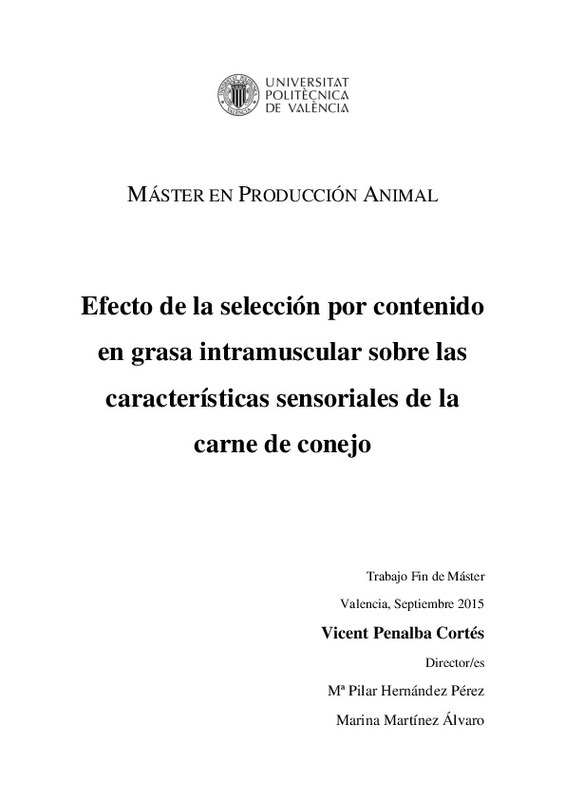JavaScript is disabled for your browser. Some features of this site may not work without it.
Buscar en RiuNet
Listar
Mi cuenta
Estadísticas
Ayuda RiuNet
Admin. UPV
Efecto de la selección por contenido en grasa intramuscular sobre las características sensoriales de la carne de conejo
Mostrar el registro completo del ítem
Penalba Cortés, V. (2015). Efecto de la selección por contenido en grasa intramuscular sobre las características sensoriales de la carne de conejo. Universitat Politècnica de València. http://hdl.handle.net/10251/73215
Por favor, use este identificador para citar o enlazar este ítem: http://hdl.handle.net/10251/73215
Ficheros en el ítem
Metadatos del ítem
| Título: | Efecto de la selección por contenido en grasa intramuscular sobre las características sensoriales de la carne de conejo | |||
| Autor: | Penalba Cortés, Vicent | |||
| Director(es): | ||||
| Entidad UPV: |
|
|||
| Fecha acto/lectura: |
|
|||
| Resumen: |
[EN] The aim of this work was to study the effect of divergent selection for intramuscular fat (GIM) content on sensory quality of the Longissimus dorsi (LD) muscle of rabbits at 9 and 13 weeks of age. Fifty six rabbits ...[+]
[ES] El objetivo de este trabajo fue estudiar el efecto de la selección divergente por contenido en grasa intramuscular (GIM) sobre la calidad sensorial del músculo Longissimus dorsi (LD) de conejo a las 9 y 13 semanas de ...[+]
|
|||
| Palabras clave: |
|
|||
| Derechos de uso: | Reconocimiento - No comercial - Sin obra derivada (by-nc-nd) | |||
| Editorial: |
|
|||
| Titulación: |
|
|||
| Tipo: |
|







